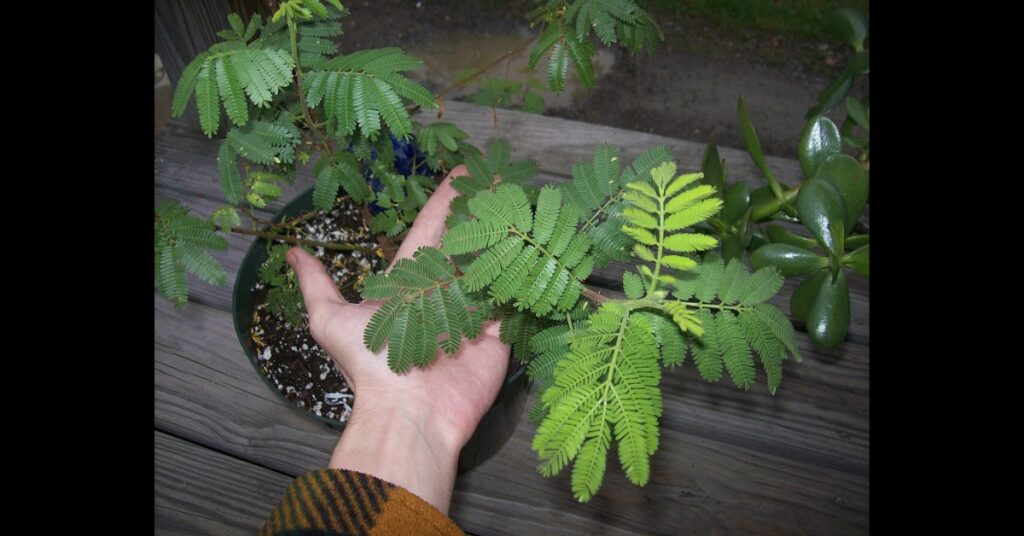Tepezcohuite (tepezcohuite), known scientifically as Mimosa tenuiflora, is a remarkable plant native to Central and South America, particularly in Mexico and Brazil. Often referred to as the “skin tree,” Tepezcohuite has been celebrated for centuries due to its impressive medicinal properties, especially in skin care and healing. This comprehensive article delves into the history, traditional uses, scientific studies, and modern applications of Tepezcohuite, highlighting its potential as a powerful natural remedy.
Historical Background
Ancient Roots
Tepezcohuite (tepezcohuite) has a rich history dating back to the ancient Mayans, who utilized the bark of the tree for its potent medicinal properties. The Mayans revered Tepezcohuite’s for its ability to treat various skin conditions, including burns, wounds, and infections. They would grind the bark into a fine powder and apply it to affected areas, taking advantage of its natural healing abilities.
Traditional Uses
In traditional Mexican medicine, Tepezcohuite’s has been used to treat a wide range of ailments. It has been applied topically to treat burns, wounds, and skin infections due to its antimicrobial and regenerative properties. Additionally, Tepezcohuite’s has been used in teas and decoctions to address gastrointestinal issues, respiratory problems, and pain relief.
Botanical Profile
Description
Tepezcohuite is a perennial tree that can reach heights of up to 8 meters (26 feet). It is characterized by its fern-like leaves, fragrant white flowers, and thorny bark. The bark is the most prized part of the tree due to its high concentration of beneficial compounds.
Habitat
Tepezcohuite’s thrives in tropical and subtropical regions, particularly in well-drained soils and areas with abundant sunlight. It is commonly found in the forests of southern Mexico, where it grows abundantly.
Active Compounds and Mechanisms of Action
Saponins
Tepezcohuite’s bark contains high levels of saponins, which are natural detergents with potent antimicrobial properties. Saponins help cleanse the skin, removing dirt and impurities while also exhibiting antibacterial and antifungal effects.
Tannins
Tannins are astringent compounds that contribute to the wound-healing properties of Tepezcohuite’s. They help tighten and constrict tissues, reducing inflammation and promoting the formation of new skin cells.
Flavonoids
Flavonoids are powerful antioxidants that protect the skin from oxidative stress and damage caused by free radicals. These compounds help reduce inflammation, improve skin elasticity, and promote overall skin health.
Xylose
Xylose is a sugar molecule that plays a crucial role in the regeneration of skin cells. It stimulates the production of collagen and elastin, essential proteins for maintaining the skin’s structure and firmness.
Lupeol
Lupeol is a triterpenoid compound with anti-inflammatory and analgesic properties. It helps reduce pain and inflammation, making Tepezcohuite an effective remedy for various skin conditions and injuries.
Scientific Studies and Research
Burn Treatment
Numerous studies have highlighted the efficacy of Tepezcohuite in treating burns. Research published in the Journal of Ethnopharmacology demonstrated that Tepezcohuite extract significantly accelerated the healing of second-degree burns in animal models. The study attributed this effect to the presence of saponins, tannins, and flavonoids, which promote tissue regeneration and reduce inflammation.
Wound Healing
A study published in the International Journal of Molecular Sciences investigated the wound-healing properties of Tepezcohuite. The researchers found that Tepezcohuite’s extract stimulated the proliferation of fibroblasts, essential cells in the formation of new tissue. Additionally, the extract increased collagen production, leading to faster wound closure and improved scar formation.
Antimicrobial Activity
Tepezcohuite’s antimicrobial properties have been extensively studied. Research published in the Journal of Applied Microbiology demonstrated that Tepezcohuite’s extract exhibited potent antibacterial activity against various pathogenic bacteria, including Staphylococcus aureus and Escherichia coli. The study concluded that Tepezcohuite could be a valuable natural alternative for treating bacterial infections.
Anti-inflammatory Effects
A study published in the Journal of Inflammation Research investigated the anti-inflammatory effects of Tepezcohuite. The researchers found that Tepezcohuite’s extract inhibited the production of pro-inflammatory cytokines, molecules that contribute to inflammation and tissue damage. This anti-inflammatory activity makes Tepezcohuite beneficial for conditions such as eczema, psoriasis, and acne.
Modern Applications in Skincare
Topical Creams and Ointments
One of the most common applications of Tepezcohuite is in topical creams and ointments designed for skin care. These products harness the regenerative and antimicrobial properties of Tepezcohuite’s to treat a variety of skin conditions, including burns, wounds, scars, and infections. Regular use of Tepezcohuite-based creams can improve skin texture, reduce blemishes, and enhance overall skin health.
Anti-Aging Products
Tepezcohuite is also gaining popularity in the anti-aging skincare industry. Its ability to stimulate collagen and elastin production helps reduce the appearance of fine lines, wrinkles, and sagging skin. Anti-aging serums and creams containing Tepezcohuite’s extract can promote a youthful complexion and improve skin elasticity.
Acne Treatment
The antimicrobial and anti-inflammatory properties of Tepezcohuite’s make it an effective natural remedy for acne. Tepezcohuite-based cleansers, toners, and spot treatments can help reduce acne breakouts, soothe irritated skin, and prevent the formation of new blemishes.
Hair Care Products
In addition to its benefits for the skin, Tepezcohuite is also used in hair care products. Shampoos and conditioners containing Tepezcohuite extract can help strengthen hair, reduce dandruff, and promote a healthy scalp. The regenerative properties of Tepezcohuite’s can also support hair growth and prevent hair loss.
Tepezcohuite in Alternative Medicine
Pain Relief
Traditional healers have long used Tepezcohuite to alleviate pain and inflammation. Tepezcohuite teas and poultices are commonly used to treat conditions such as arthritis, muscle pain, and joint inflammation. The analgesic and anti-inflammatory properties of Tepezcohuite make it a valuable natural remedy for managing pain.
Respiratory Health
Tepezcohuite has also been used to address respiratory issues. Tepezcohuite-based inhalations and teas are believed to help relieve symptoms of respiratory conditions such as asthma, bronchitis, and colds. The anti-inflammatory and antimicrobial properties of Tepezcohuite’s can help reduce inflammation in the airways and fight off respiratory infections.
Gastrointestinal Health
In traditional medicine, Tepezcohuite has been used to treat various gastrointestinal issues. Tepezcohuite’s teas and decoctions are believed to help alleviate symptoms of stomach ulcers, gastritis, and diarrhea. The tannins and saponins in Tepezcohuite’s may help reduce inflammation in the digestive tract and promote healing of the mucosal lining.
How to Use Tepezcohuite
Topical Application
For skin care, Tepezcohuite can be applied topically in the form of creams, ointments, and serums. These products should be applied to clean, dry skin and massaged gently until fully absorbed. For burns and wounds, a Tepezcohuite-based ointment can be applied directly to the affected area to promote healing.
Tepezcohuite Powder
Tepezcohuite powder can be used to make DIY skin care treatments. To make a Tepezcohuite paste, mix the powder with a small amount of water or aloe vera gel until a thick consistency is achieved. Apply the paste to the skin and leave it on for 15-20 minutes before rinsing off with warm water. This can be used as a face mask to improve skin texture and reduce blemishes.
Tepezcohuite Tea
Tepezcohuite’s tea can be prepared by steeping 1-2 teaspoons of Tepezcohuite’s bark powder in a cup of hot water for 10-15 minutes. The tea can be consumed to support digestive health, alleviate respiratory symptoms, and reduce inflammation. It is recommended to drink Tepezcohuite’s tea in moderation, as excessive consumption may cause digestive discomfort.
Safety and Precautions
Allergic Reactions
While Tepezcohuite is generally considered safe for most people, it is important to conduct a patch test before using Tepezcohuite-based products on a large area of the skin. Apply a small amount of the product to a small patch of skin and wait 24 hours to check for any signs of allergic reactions, such as redness, itching, or swelling.
Dosage and Usage
When using Tepezcohuite’s for medicinal purposes, it is important to follow recommended dosages and usage guidelines. Overuse of Tepezcohuite, especially in its powdered form, can cause skin irritation or digestive discomfort. It is best to consult with a healthcare professional before incorporating Tepezcohuite into your health or skincare routine.
Pregnancy and Breastfeeding
There is limited research on the safety of Tepezcohuite during pregnancy and breastfeeding. Therefore, it is advisable for pregnant and breastfeeding women to avoid using Tepezcohuite-based products without consulting a healthcare provider.
Environmental Impact and Sustainability
Sustainable Harvesting
Tepezcohuite’s trees play a vital role in their native ecosystems, providing habitat and food for various wildlife species. Sustainable harvesting practices are essential to ensure the conservation of Tepezcohuite populations and their natural habitats. This includes avoiding overharvesting, allowing trees to regenerate, and promoting reforestation efforts.
Ethical Sourcing
Consumers should seek out Tepezcohuite products from companies that prioritize ethical sourcing and sustainability. This ensures that the Tepezcohuite’s used in products is harvested responsibly and supports the livelihoods of local communities.
Future Research and Potential
Exploring New Applications
Ongoing research is likely to uncover new applications for Tepezcohuite in both traditional and modern medicine. Its unique combination of antimicrobial, anti-inflammatory, and regenerative properties holds promise for treating a wide range of health conditions beyond skin care.
Clinical Trials
More clinical trials are needed to further validate the therapeutic potential of Tepezcohuite’s. Rigorous scientific studies will help establish standardized dosages, formulations, and safety guidelines for Tepezcohuite-based products.
Integration into Mainstream Medicine
As research on Tepezcohuite’s continues to grow, there is potential for its integration into mainstream medicine. This could include the development of standardized Tepezcohuite’s-based treatments for conditions such as burns, wounds, and inflammatory skin diseases.
Conclusion
Tepezcohuite the “skin tree,” offers a wealth of benefits for skin care, healing, and overall health. Its rich history, coupled with modern scientific research, highlights its potential as a powerful natural remedy. From traditional uses by ancient Mayans to contemporary skincare products, Tepezcohuite continues to captivate researchers and consumers alike. As we continue to explore its potential, Tepezcohuite’s stands as a testament to the incredible healing power of nature. By embracing sustainable and ethical practices, we can ensure that Tepezcohuite’s remains a valuable resource for generations to come.







